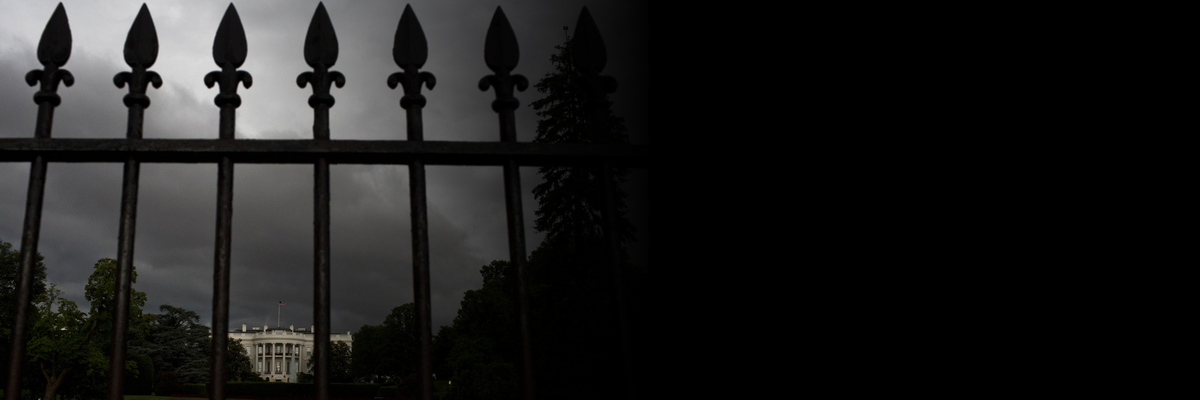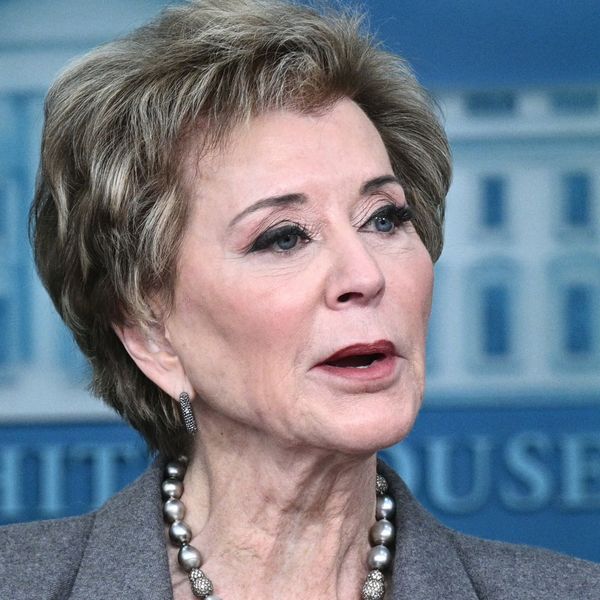Since the moratorium on federal student loan payments was enacted two years ago at the onset of the Covid-19 pandemic, nearly 37 million borrowers have saved a combined $195 billion, but if President Joe Biden refuses to extend the freeze past May 1--or use his executive authority to cancel student debt--many are likely to struggle with monthly bills, according to an analysis released Tuesday by the Federal Reserve Bank of New York.
"We can do more than pause loans, we can wipe them away."
The Coronavirus Aid, Relief, and Economic Security Act, passed by Congress and signed into law by former President Donald Trump in March 2020, paused payments on student loans held directly by the federal government and set interest rates on those loans at zero. The repayment and interest rate freeze has been extended multiple times by the Trump and Biden administrations.
There are, however, 10 million borrowers with privately held Federal Family Education Loans (FFEL) or other types of bank-owned loans who have been excluded from the two-year repayment moratorium. According to the Federal Reserve Bank of New York, FFEL borrowers have had a 33% higher delinquency rate on non-student, non-mortgage debt since late 2020 compared with borrowers whose direct federal student loans have remained in forbearance.
If Biden allows payments on direct federal student loans to resume in less than six weeks, the New York Fed expects those borrowers to run into similar financial difficulties.
"We believe that direct borrowers are likely to experience a meaningful rise in delinquencies, both for student loans and for other debt, once forbearance ends," the researchers wrote.
The new report comes as the Biden administration considers next steps for dealing with the federal government's roughly $1.6 trillion student loan portfolio. The White House is reportedly mulling another extension of the current repayment pause.
While welcoming such a move--"federal student debt payments and interest has been paused since March 2020... and the federal government is doing just fine," the Debt Collective noted Tuesday night on social media--economic justice advocates and progressive lawmakers continue to demand far-reaching student debt cancellation.
Rep. Vicente Gonzalez (D-Texas), for instance, said that "we can do more than pause loans, we can wipe them away"--pointing to his Student Loan Relief Act as a "first step."
Since Biden took office, borrowers, activists, and lawmakers--led by Senate Majority Leader Chuck Schumer (D-N.Y.), Sen. Elizabeth Warren (D-Mass.), and Rep. Ayanna Pressley (D-Mass.)--have been pushing the president not only to follow through on his modest campaign promises regarding student loan relief but to cancel at least $50,000 in debt per borrower.
Biden, who has suggested erroneously that he lacks the executive authority to broadly cancel student debt without legislation, asked the Department of Education (DOE) last April to prepare a memo on the subject.
In October, it was revealed that the Biden administration received the memo on April 5--thanks to documents and internal emails obtained by the Debt Collective through a Freedom of Information Act request. Despite repeated demands from dozens of Democratic lawmakers, Education Secretary Miguel Cardona has not yet made the concealed memo public.
Legal experts say the Higher Education Act of 1965 clearly empowers Cardona to eliminate student debt for all 45 million federal borrowers in the U.S.
Section 432(a) of the law states that the education secretary has the authority to modify loan terms and "enforce, pay, compromise, waive, or release any right, title, claim, lien, or demand, however acquired, including any equity or any right of redemption"--a provision the DOE has invoked to unilaterally eliminate more than $15 billion in student debt for hundreds of thousands of borrowers in the past year.
Progressives have stressed that prolonging the payment freeze only postpones economic hardship for millions of borrowers--many of whom are struggling to make ends meet amid rampant price-gouging and disappearing federal relief programs.
A Data for Progress survey released earlier this month by the Student Borrower Protection Center found that just 1-in-5 likely voters with student debt are "very confident" in their ability to make payments if the moratorium is lifted in May.
"Borrowers are not ready," Rep. Pramila Jayapal (D-Wash.) warned Tuesday. "Cancel student debt for all."
The Debt Collective, as Common Dreams reported last year, has drafted an executive order for the president directing Cardona to "cancel all obligations to repay federal student loans," which would save borrowers hundreds of dollars per month and boost the nation's gross domestic product by more than $173 billion in the first year alone.
With Biden's push for the Build Back Better Act and the Freedom to Vote: John R. Lewis Act blocked by corporate Democrats and Republicans in Congress, progressives have argued that the president must use his existing executive authority to the fullest extent possible--including by canceling at least $50,000 in student debt per borrower--to deliver material gains for the working class and avoid an electoral disaster in the midterms.
Recent polling shows that a majority of adults in the U.S., including those without education loans to repay, support student debt cancellation.
The Debt Collective has organized an April 4 day of action in Washington, D.C. to pressure Biden to "pick up the pen" and eliminate student debt. If the president refuses to intervene, the debtors' union has called for a nationally coordinated refusal to make payments.



